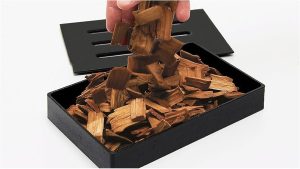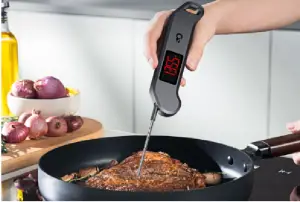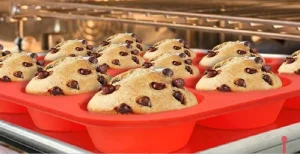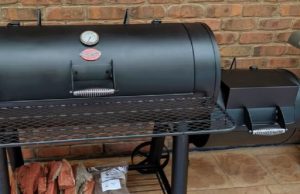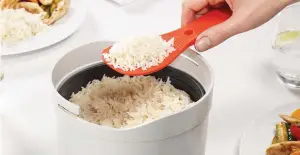7 Tips to Make Your Hot Plate Hotter
To make a hot plate hotter, ensuring optimal functionality and proper maintenance is crucial.
Electric hot plates have become an indispensable tool for many, given their compact size and versatility. These devices primarily function using an electric heating element. The quality and design of this element, coupled with the power source, dictate how hot the plate can get. For instance, a 1000-watt hot plate is designed to achieve higher temperatures faster than its lower-wattage counterparts.
Yet, like all gadgets, they can occasionally underperform. If your hot plate isn’t getting hot enough, there might be several reasons. Wear and tear over time, voltage fluctuations, or even an obstruction in the heat distribution can be culprits.
In some cases, enthusiasts even choose to bypass the hot plate thermostat to push its heating capabilities further. However, this action can pose risks if not done carefully and with proper knowledge.
In essence, the performance of a hot plate is an interplay of its design, power, and the environment it operates. Regular checks and understanding its mechanics can help in optimizing its heat output.
7 Tips to Make Your Hot Plate Hotter
In your pursuit of achieving the optimal temperature while using a hot plate, implementing techniques to increase the heat output can be highly beneficial. Here, we present seven proven tips to make a hot plate hotter, ensuring that your cooking or heating process is efficient and effective.
Tips 1. Bypassing the Built-in Thermostat
The built-in thermostat in a hot plate is designed to regulate the temperature to prevent overheating. Yet, bypassing it can allow the plate to reach higher temperatures.
Before attempting this, it is essential to be well-versed with the electronic components of the device to avoid any accidents. Proceed with caution and consider seeking advice from professionals to conduct the modifications safely.
Tips 2. Utilizing a High-quality Cookware
Utilizing high-quality cookware with good heat retention and distribution properties can enhance the efficiency of a hot plate.
Materials such as cast iron can hold more heat compared to other materials, allowing for a hotter cooking surface. Make sure to choose cookware that matches the size of the hot plate to ensure even heating.
Tips 3. Ensuring a Well-maintained Power Source
To ensure your hot plate reaches the desired temperature, maintaining a robust and consistent power source is vital.
It is advisable to plug the hot plate directly into a wall socket instead of using extension cords, which can reduce the power supply. Regularly check the condition of the plug and the cord to avoid any power losses.
Tips 4. Preheating the Hot Plate
Preheating the hot plate before placing the cookware on it can allow it to reach higher temperatures.
Allocate a minimum of 10-15 minutes for the preheating process to ensure that the plate achieves a consistent and high temperature, facilitating quicker and hotter cooking.
Tips 5. Utilizing a Heat Diffuser
A heat diffuser is a tool that can help in evenly distributing the heat over the surface of the cookware.
By using a heat diffuser, you enhance the ability of the hot plate to transmit higher levels of heat evenly across the cooking surface, preventing cold spots and allowing for hotter overall temperatures.
Tips 6. Positioning the Hot Plate in a Warm Environment
The surrounding environment can influence the performance of a hot plate. Placing it in a warm environment can aid in achieving higher temperatures faster.
Avoid using the hot plate in cold or windy areas, as these conditions can cause significant heat loss.
Tips 7. Regular Cleaning and Maintenance
Ensuring that the hot plate is clean and well-maintained can prevent any barriers to heat transfer. Residues and dirt can act as insulators, preventing the plate from reaching higher temperatures.
Establish a routine to clean the hot plate regularly to remove any particles that might hinder its performance.

Hot Plate Mechanics: Unveiling the Heat Limit
Hot plates, favored by many for their convenience and efficiency, sometimes don’t meet the heating expectations of their users. These nifty devices primarily utilize an electric heating element to generate heat.
Over time, wear and tear or perhaps manufacturing variances can lead to suboptimal performance. Factors like the quality of the heating element, any potential damage, or even voltage fluctuations can play a role.
Ensuring optimal performance may require periodic maintenance or understanding the specifications and limitations of your device.
The Unexpected Shutdown of Hot Plates
It can be quite bothersome if a hot plate turns off amidst cooking. This automatic turn-off is primarily a safety feature, ensuring the device doesn’t overheat or cause potential hazards.
Most hot plates come with a built-in thermostat, which regulates the temperature. If the internal temperature crosses a certain threshold, the thermostat triggers the device to shut down.
Keeping the device in a well-ventilated area and ensuring it’s free from obstructions can often prevent these unwanted shutdowns.
You Might Also Like: Best Twig Stoves
Pushing the Temperature Boundaries
One might wonder about the highest temperature a hot plate can achieve. Several factors determine this. The design, heating element quality, power source, and even the material of the plate itself can influence the peak temperature.
Some premium models are designed to reach very high temperatures swiftly, while more economical models might have a more modest range. To achieve higher temperatures, preheating and using compatible, heat-retentive cookware can help.
The Thermostat Bypass Technique
Bypassing the hot plate’s thermostat is a somewhat technical way to increase its temperature.
By doing this, one essentially removes the temperature limiting factor. It’s a procedure best suited for those familiar with electronics, as mishandling can lead to malfunctions or safety concerns.
If you’re not an expert, it’s recommended to consult someone proficient in electronics before attempting.
Expanding Hot Plate Horizons
Hot plates are versatile tools. Beyond just heating or cooking food, they have found applications in labs, workshops, and more.
The consistent and controlled temperature they offer makes them suitable for a myriad of tasks, from heating chemicals in a lab to serving as a makeshift stovetop in dorm rooms.
Their compact nature also makes them a favorite for those with limited kitchen space or those on the move. Knowing how to optimize their heat can open doors to even more uses and applications.
Some related questions and answers
Is Elevating a Hot Plate Beneficial?
Answer: Elevating a hot plate can improve airflow around the device, potentially helping with heat dissipation and efficiency. However, ensure that the elevation is stable to avoid accidents.
Do Thicker Base Cookwares Improve Heating?
Answer: Yes, cookware with a thicker base tends to distribute heat more evenly. This even distribution aids in better cooking and can enhance the efficiency of a hot plate.
Can Foil Increase a Hot Plate’s Temperature?
Answer: Using foil can reflect heat back to the cookware, potentially increasing efficiency. But be cautious, as improper use can lead to safety concerns or uneven cooking.
How Does Ambient Temperature Affect a Hot Plate?
Answer: Ambient temperature plays a role in how quickly a hot plate heats up. In colder environments, it might take longer, while in warmer settings, the hot plate could achieve desired temperatures faster.
Does Surface Material Impact Heat Efficiency?
Answer: Absolutely. A smooth, flat surface ensures better contact with the cookware, leading to more efficient heat transfer compared to uneven or damaged surfaces.
Can Overloading Affect a Hot Plate’s Heating?
Answer: Yes, overloading can strain the heating element and reduce its efficiency. It’s always best to use cookware that’s appropriately sized for the hot plate.
Is It Safe to Manually Adjust Hot Plate Coils?
Answer: Manual adjustments to hot plate coils can be risky. It might lead to damage or uneven heating. Always refer to the manufacturer’s guidelines or consult with an expert before making adjustments.
Featured Image Credit: Amazon.com
